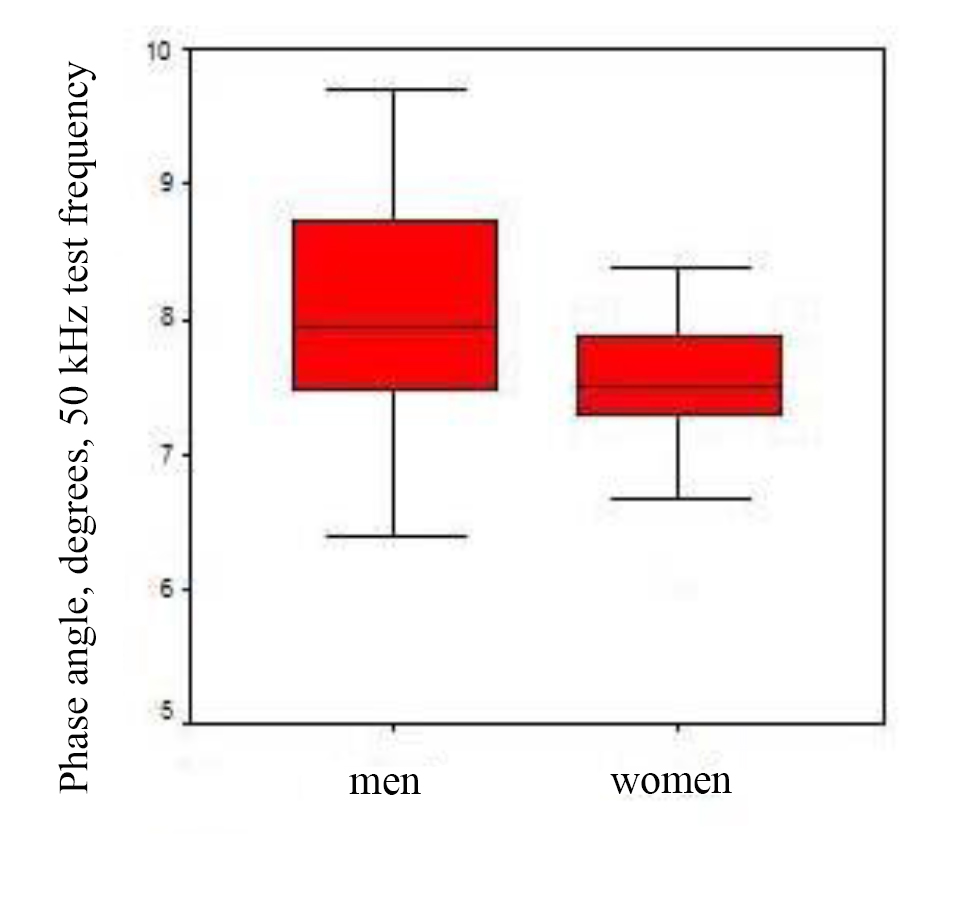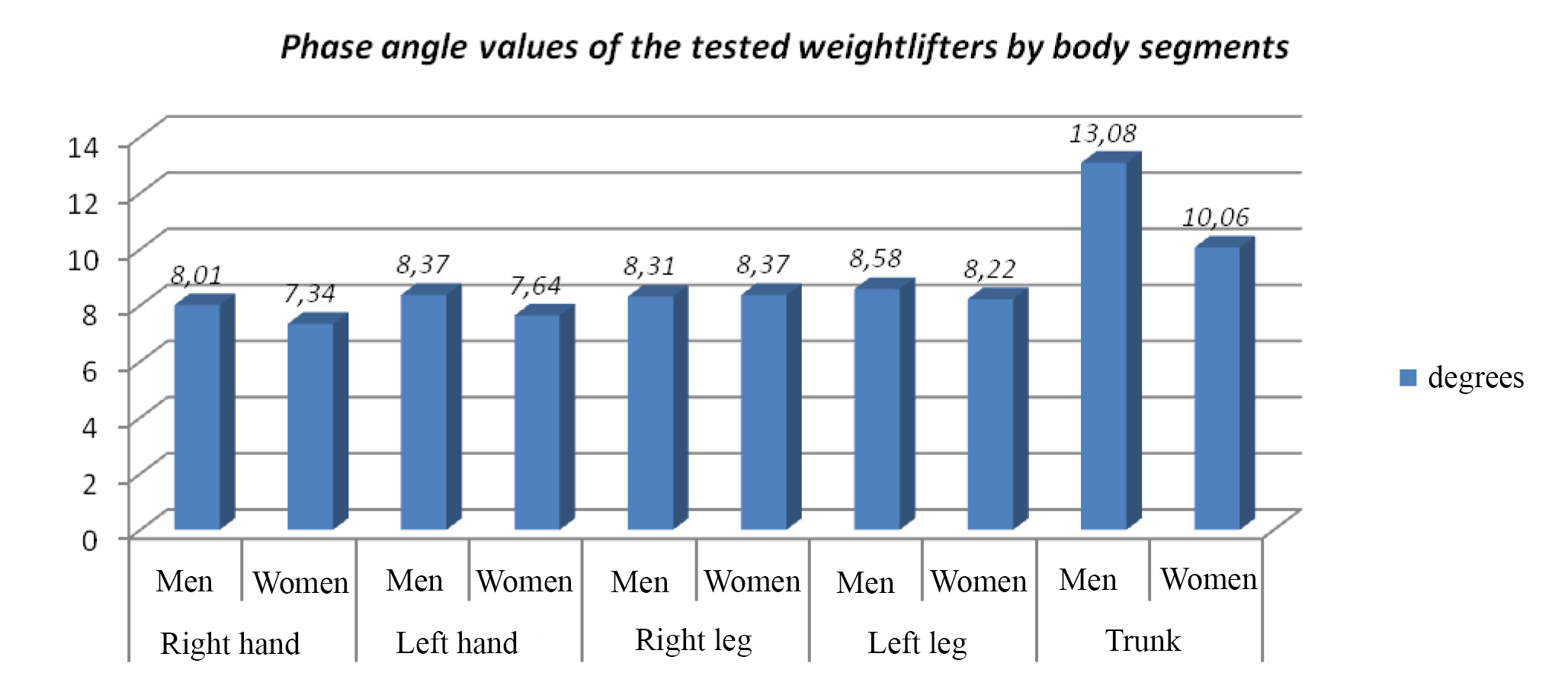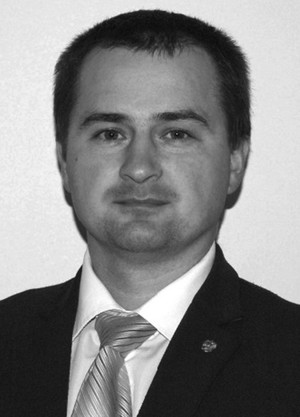Weight lifter training process organization based on bioimpedance analysis data
Фотографии:
ˑ:
Associate professor, Ph.D., doctoral student M.O. Aksenov
Postgraduate A.V. Aksenova
Buryat State University, Ulan-Ude
Keywords: sport, bioimpedance data analysis, weightlifting, workload, method, training
Introduction
Bioimpedance data analysis is a relatively new independent sport diagnostics method. It was for the last few years that the relevant sector of biomedical research has shaped up as a separate scientific domain that is now called “body composition science”. In the present development stage of this science, it is being increasingly equipped with modern research technologies and methods. As things now stand, the science has at least 80 instruments of bioimpedance analysis in its disposal. The anthropometric, caliperometric and underwater weighing techniques traditionally applied for body composition analysis are now supported by the rapidly developing biophysical techniques with bioimpedance analysis (BIA) being rated among the most popular ones as a contact method to meter body tissue electrical conductivity values that provides the tools to analyze a wide variety of morphological and physiological parameters of the human body. The bioimpedance data analysis is designed to meter active and reactive resistance indices of the human body on the whole and different body segments in particular using variable frequencies. The resultant data may be used to compute different body composition characteristics including the fat tissue/ lean tissue/ cellular/ musculoskeletal mass ratios, water content and distribution in the body etc.
The purpose of the study was to substantiate the most effective design of the weightlifter training system based on the bioimpedance data analysis.
Materials and methods
We used the ABC-01 Medass Bioimpedance Analyzer to obtain the athletes’ body composition data. Input data of the system include age, sex, height, weight, waist/ thigh/ wrist girth data etc. The body parameters may be metered in sitting or prone position, with the contact electrodes being fixed on the athlete’s hand or leg and connected to the Analyzer. Having obtained the data readings, the Analyzer software processes the output data, with the results of analysis being recorded in the test logs and then being used in support of comments, recommendations and comparisons with the prior data readings and analyses available in the system database including a variety of diagrams, variation trends (dynamics) for the main body composition parameters etc. [4, 7, 10, 11, 12].
We have successfully applied this method for the purposes of the elite weightlifters’ training process control based on assessments of the individual competitive fitness and physical working capacity levels. In the study process, we gave preference to the sport application version of the Analyzer designed in portable format with a focus on the competitive fitness analyzing functionality of the tools. The instrument is designed to measure the following body parameters:
ü Phase angle that is indicative of the muscle tissue performance level;
ü Content of muscle tissue, fat tissue and body water, the ratios providing an important indication of the efficiency of the weight-reducing procedures applied by athletes of different weight categories. In addition to the above ratios, the system reads above 10 other parameters including the specific basal metabolism rate, body mass index, waist-to-thigh ratio etc., and generates variation trends (dynamics) of the parameters.
It is the phase angle that is considered a key working capacity index. A phase angle reduction is believed to be indicative of high probability of the cellular membranes being impaired thereby increasing the proportion of destroyed cells in the body tissues. Increased capacitive reactance indices, by contrast, are considered indicative of high-quality functional condition of the cellular membranes and, hence, the cells themselves. These are basically the reasons to assume that higher phase angle value promotes better body conditionality. Therefore, modern sport medicine interprets increased phase angle values as indication of high content of active cellular mass and, consequently, good athletic fitness (Lukaski et al., 1990). We have made a sequence of background tests prior to the main study to assess the elite powerlifters’ working capacity levels based on the PWC170 tests versus the bioimpedance data analysis, with both of the sets of outcome data being found in a reasonably good correlation (with r = 0.95; and P < 0.05) [2, 16].
Subject to the educational experiment that we completed were 20 to 35 years-old athletes of both sexes successful in the weightlifting sport disciplines (n = 64). Elite powerlifters qualified as Masters of Sport of Russia and International Class Masters of Sport dominated in the study sample. Geographically, the study was conducted in the following two areas of Russia: Republic of Buryatia and the Irkutsk Province. The athletes’ body parameters were tested and analysed in the final phase of the competitive period within the relevant macro-cycle [season]. The competitive-fitness-specific data were obtained using the single-frequency four-polar “Medass ABC-01” Bioimpedance Analyzer “Sport” Version operating at 50 kHz frequency and 800А current strength. Prior to the training session subject to the analysis, the athletes practiced in the gym. The outcome bioimpedance data were used as a basis for further educational consulting, with the test logs being presented to the chief coach who could use them for making a decision on the necessary adjustments to the training scenarios, the adjustments being focused on the individual analyzed needs of every tested athlete. Furthermore, the outcome phase-angle data analysis was used to generate ratings of the athletes. Of special interest for the coaches and athletes was the fact that the analytical ratings were in excellent correspondence with the actual ratings of the athletes in the competitions.
The outcome phase angle data analysis broken down by the body segments were used to make practical recommendations for the coaching teams and athletes with an emphasis on the training workload management process. The body composition profiling data gave the means for conclusions on content and distributions of the fat/ muscle tissues and water contents in the body by segments and on the body protein content being excessive or inadequate. These conclusions were used as a basis for individual diets being developed for every tested athlete with consideration for the deficient components as revealed by the analysis, i.e. proteins, fats and water balancing needs of the athlete. Some athletes that showed low content of active cellular mass were recommended protein-enriched diets, and the others who showed lower water content were recommended the individual creatine-focused diets. In the cases of low phase angle indices as provided by the instrumental analysis, the athletes were diagnosed as exhausted and were recommended to scale down the training loads and intensities.
Therefore, the bioimpedance tests and analysis were successfully used to provide well-grounded training process management and diet improvement recommendations for the elite weightlifters.
Study results and discussion
The test data demonstrated that the mean statistical values of the phase angles in the relevant competitive macro-cycle of the powerlifters qualified as Masters of Sport of Russia and International Class Masters of Sport were as follows: 8.06 degrees with m=0.86 (n=42) for men; and 7.49 degrees with m=0.63 (n=22) for women; with the maximum statistical values of the phase angle estimated at 9.71 degrees for men and 8.39 degrees for women.

Diagram 1. Phase angle values of tested weightlifters
The musculoskeletal mass (MSM) ratios of the tested athletes in the competitive macrocycle were estimated at =52.3% with m=1.79 for men; and =50.46% with m=2.18 for women. The maximum MSM ratios were found at 55.8% for men and 52.5% for women.
Active cellular mass ratios as provided by the analyses of the weightlifters in the competitive macrocycle made up 62.46% with m=3.22 for men; and 60.29% with m=2.63 for women.
The bioimpedance data analysis of the elite weightlifters with a breakdown by the body segments generated the following indices:

Diagram 2.
The obtained data sets may be used as base model characteristics in application to the athletes of weightlifting sport disciplines qualified as Masters of Sport of Russia and International Class Masters of Sport.
Conclusion
The elite weightlifting athletic training process design based on the bioimpedance data analysis gives the means to prudently control the individual workloads and develop recommendations to the coaching teams to help them design and duly manage individual training scenarios.
The group bioimpedance tests and analysis provided us with good grounds for the athletes’ ratings by different fitness classes. The practical recommendations we offered based on these data enabled the coaches to adjust the competitive form achievement process with due allowance for the backlogs in the individual athletic training systems. Knowing that the athletic training process is in fact a multisided process that may be characterized by a wide variety of endogenous and exogenous factors, we have good reasons to believe that the bioimpedance method provides excellent tools to complement the classic study techniques and support the athletic conditionality databases to help control the individual fitness profiles as required by the annual competition schedules.
The study was performed pursuant to the relevant provision of the State Order of the Ministry of Education and Science of the Russian Federation under Project #3842 “Sport Genetics Laboratory” (Project Manager O.A. Aksenov, 2015).
References
- Abramova, T.F. Morfologicheskie kriterii - pokazateli prigodnosti, obshchey fizicheskoy podgotovlennosti i kontrolya tekushchey i dolgovremennoy adaptatsii k trenirovochnym nagruzkam: uchebno-metodicheskoe posobie (Morphological criteria - indicators of fitness, overall physical fitness and control of current and long-term adaptation to training loads: teaching aid) / T.F. Abramova, T.M. Nikitina, N.I. Kochetkova; Ministry of Sport, Tourism and Youth. Russian policy RF, Center of sports training of Russian national teams. - Moscow: TVT Divizion, 2010. - 103 P.
- Aksenov, M.O. Printsipy sportivnoy trenirovki (Sports training principles) / M.O. Aksenov, A.V. Gaskov. - Ulan-Ude: Publishing House of Buryat State University, 2009. - 76 P.
- Baluchi, R. Faktorny analiz sostava massy tela studentov-sportsmenov (bioimpedansometriya) (Body mass factor analysis for student-athletes (bioimpedance analysis) / R. Baluchi, E.G. Martirosov, A.V. Smolenskiy // 1 Vserossiyskaya nauchno-prakticheskaya konferentsiya studentov i molodykh uchenykh na angliyskom yazyke (1 Russian theor.-practical conference of students and young scientists in English). – Moscow: Nauka i sport, 2004. - P. 40-53.
- Bioimpedansnyie tekhnologii v meditsine (Bioimpedance technologies in medicine) / Nikolaev D.V. [et al.] // Sportivnaya meditsina i issledovaniya adaptatsii k fizicheskim nagruzkam: nauchnye chteniya, posvyashchennye 80-letiyu so dnya rozhdeniya prof. V.L. Karpmana, 27 apr. 2005 g. (Sports Medicine and study of adaptation to physical loads: scientific meetings dedicated to the 80th anniversary of prof. V.L. Karpman, April 27. 2005) / Rus. State Univ. of Phys. Cult., Sport and Tourism. - Moscow, 2005 - P. 173-180.
- Dodonov, A.P. Operativnoe funktsional'noe sostoyanie v podgotovke kvalifitsirovannykh pauerlifterov (Operative functional state in training of skilled power lifters) / A.P. Dodonov, T.N. Shutova // Teoriya i praktika fizicheskoy kul'tury. - 2005. - № 3. - P. 26.
- Korneeva, I.T. Bioimpedansny analiz sostava tela kak metod otsenki funktsional'nogo sostoyaniya yunykh sportsmenov (Bioimpedance body composition analysis as functional state estimation method for junior athletes) / I.T. Korneeva, P.D. Polyakov, D.V. Nikolaev // Lechebnaya fizkul'tura i sportivnaya meditsina. - 2012. - № 10. - P. 30-36.
- Martirosov, E.G. Tekhnologii i metody opredeleniya sostava tela cheloveka (Human body composition estimation technologies and methods) / E.G. Martirosov, D.V. Nikolaev, P.G. Rudnev. - Moscow: Nauka, 2006. - 247 P.
- Mosina, E.I. Upravlenie podgotovkoy kvalifitsirovannykh legkoatletov-prygunov na osnove tekushchego kontrolya sostava ikh tela (Management of skilled jumpers' training via monitoring of their body composition) / E.I. Mosina // Teoriya i praktika fizicheskoy kul'tury. - 2014. - № 11. - P. 51.
- Nikolaev, D. V. Bioimpedansny analiz sostava tela cheloveka (Bioimpedance analysis of human body composition) / D.V. Nikolaev, A.V. Smirnov, I.G. Bobrinskaya, P.G. Rudnev. - Moscow: Nauka, 2009. - 392 P.
- Nikolaev, D.V. Sostav tela i bioimpedansny analiz v sporte (obzor) (Body composition and bioimpedance analysis in sport (review) / D.V. Nikolaev, P.G. Rudnev // Sportivnaya meditsina: nauka i praktika. - 2012.- № 3. - P. 34-41.
- Nikolaev, D.V., Rudnev, P.G. Bioimpedansny analiz: osnovy metoda, protokol obsledovaniya i interpretatsiya rezul'tatov (Bioimpedance analysis: basics of the method, protocol and survey results interpretation) / D.V. Nikolaev, P.G. Rudnev // Sportivnaya meditsina: nauka i praktika. - 2012. - № 2. - P. 29-37.
- Feropontov M.A. Modelirovanie sportivnoy uspeshnosti v pauerliftinge s uchetom geneticheskih faktorov (Genetics-related sport success simulation in powerlifting) / M.A. Feropontov, E.V. Lekontsev, V.P. Pushkarev, E.D. Pushkarev // Nauchno-sportivnyiy vestnik Urala i Sibiri. - 2014. - V. 1, № 1. - P. 40-43.
- Khafizova, G. Sovremennye aspekty izucheniya sostava tela cheloveka (Modern aspects of human body composition examination) / G. Khafizova, A. Samoylov, N. Rylova // Nauka v olimpiyskom sporte. - 2014. - № 2. - P. 51-55.
- Shikunov, A. N. Girevoy sport: istoriko-kul'turologicheskie i metodologicheskie aspekty (Kettlebell lifting: historical-culturological and methodological aspects) / A. N. Shikunov; Ministry of Education and Science RF, Tambov state un-ty n.a. G.R. Derzhavin. - Tambov: Tsentr-Press, 2012. - 127 P.
- Shumilin, E.R. Otsenka stepeni razvitiya spetsial'nykh fizicheskih kachestv kvalifitsirovannykh pauerlifterov (Evaluation of level of development of special physical qualities of skilled powerlifters) / E.R. Shumilin // Voprosy funktsional'noy podgotovki v sporte vysshikh dostizheniy. - 2013. - V. 1, № 1. - P. 49-52.
- Janssen I., Heymsfield S.B., Baumgartner R.N., et al. Estimation of skeletal muscle mass by bioelectrical impedance analysis // Am. J. Clin. Nutr. 2000. V.89, N.2. P.465-471.
Corresponding author: 6730@mail.ru
Abstract
The aim of the work was to organize the training process of weightlifters based on the bioimpedance analysis data. The technique of control of exercise parameters in terms of phase angle, protein saturation in tissues, fat and muscle mass levels, as well as the rate of metabolism of athletes was designed. An educational experiment with the participation of athletes of the Republic of Buryatia and the Irkutsk region (Masters of Sports of Russia (MS) and International Class Masters of Sports" (ICMS) was performed. Bioimpedance analysis was carried out in the body segments. Based on the results of the analysis practical recommendations on improvement of the athletes' training were formulated. Primary data were processed using the methods of mathematical statistics. Reliability was determined using a sign criterion, body composition was analyzed by means of frequency analysis using the SPSS 17.0 software. The results of the frequency analysis were applied to establish the fitness level based on the phase angle and the body segments of MS and ICMS (weightlifting sports - powerlifting, arm wrestling, strongman, etc.). There were identified the most significant average indicators of the percentage of active cell mass in the subjects, the skeletal muscle mass percentage, as well as the influence of a specialized sports diet on the body composition. There were developed model characteristics of phase angles for the body segments of the athletes, which can be used for planning of fitness level of weightlifters.



